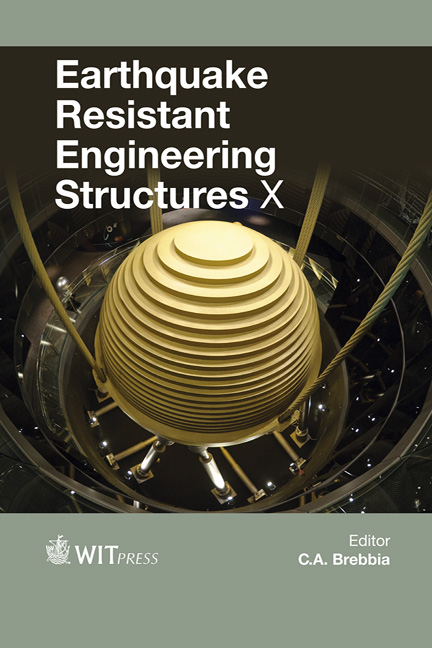In-plane Behaviour Of Innovative Masonry Infills Based On Different Configurations Of Wooden Sliding Joints
Price
Free (open access)
Transaction
Volume
152
Pages
13
Page Range
289 - 301
Published
2015
Size
1,564 kb
Paper DOI
10.2495/ERES150241
Copyright
WIT Press
Author(s)
V. Bolis, L. Migliorati, A. Stavridis, M. Preti
Abstract
The seismic vulnerability of masonry infilled frames represents a critical issue in reinforced concrete and steel buildings, widely highlighted by ruinous collapses during earthquakes and studied by many authors. In these structures, the interaction between the flexible frame and the rigid masonry infill modifies the dynamic response of the frame, inducing possible undesired collapse mechanism, and, on the other hand, can cause widespread damage in the infills. To avoid these detrimental effects, a technological solution for the design of the infills has been studied and tested in the last years at the University of Brescia, consisting in partitioning the masonry with wooden planks, working as sliding joints. Tests have shown the potential of the solution for providing a superior performance than traditional masonry infills, thanks to the reduction of the detrimental effects of the infill frame interaction. The benefit comes from a significant reduction of the infill strength and stiffness, a limitation of its damage under in-plane loading and a ductile behaviour, with energy dissipation capacity that can be easily predicted. In this paper a numerical study that extends test results is presented. A parametric analysis of the response of the infills has been performed as a function of some geometrical and mechanical properties: stiffness and strength of the materials, dimension of the infill and configuration of the sliding joints. The results offer information necessary for the application of the construction technique, which is proposed to improve the infilled frame seismic response.
Keywords
masonry infill, sliding joints, material testing, numerical modelling





